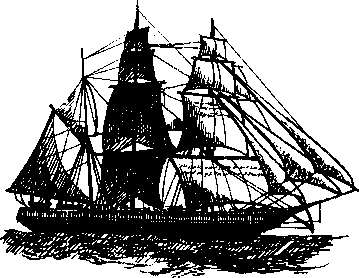 |
|
 |
|
The British Navy was transporting breadfruit trees from the West Indies to the Pacific Islands. This was to supply food for the ever expanding native population. The plants were transported to British "Men-of-war" they were not involved in any war had nothing better to do. One of these ships was "The Bounty" and its crew journeyed among the Pacific islands distributing breadfruit as they went. Many of the crew became weary of their own lives when they saw the idyllic lifestyles many of the natives led. Their lives were marred by their captain, a certain William Bligh who although being a master mariner had a rough streak in him which showed when punishment was given whenever a seaman committed an offence.
Many of the sailors hated Bligh and one night they rose up in mutiny. Bligh, and the crew still loyal to him, were set adrift in a small open boat and the story of his four thousand mile journey to safety does much credit to Bligh's seamanship. The mutineers, led by the mate, Fletcher Christian, 'put in' at Tahiti and picked up some natives. Looking for a safe refuge they discovered Pitcairn and rammed 'the Bounty' aground on the shore.
The sailors removed all useful implements and then burned the ship. The new islanders settled on Pitcairn and soon grew in numbers. Unfortunately squabbles broke out and many of the slanders died. By 1819, when an American whaling-ship called, there was only one original member, John Adams, left. The news of the discovery was quickly passed back to London, and it was decided to grant a free pardon to the islanders.
The Island soon prospered and the population rose to a peak of about two hundred in 1930. Since then it has fallen to about fifty-five, many young islanders having left to go to New Zealand, bored with the idyllic lifestyle.
It has no natural harbour, and this has prevented any large expansion of facilities. The islanders still sell their home-made goods to passing cruise liners and this is a substantial part of their income. Having been isolated from the outside world for so long, the islanders have no resistance against some common illnesses and an incredible amount of bureaucratic 'red tape' is required to visit the island. Even if permission is given, transport to and from the island is a problem, as not many ships pass by. A journey to Pitcairn is the job of a specialist travel agent.
The island seems to be of great use in the philatelic world, the hobby of stamp collecting. The island issues about four sets of stamps a year, and due to its remote location the stamps are much sought after.
Most people know the story of 'Mutiny on the Bounty but not many know the fate of the mutineers. Pitcairn is a remote island with a slowly decreasing population and with the French Government conducting atomic-bomb tests a few hundred miles away, attempts may be made to evacuate it. If these plans go ahead the story of this small but famous island may close forever.
John Czyrko